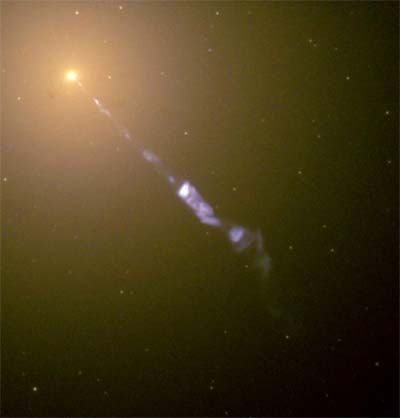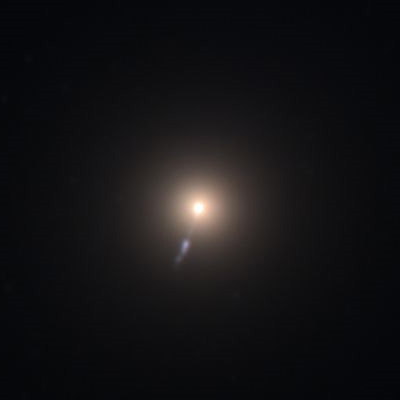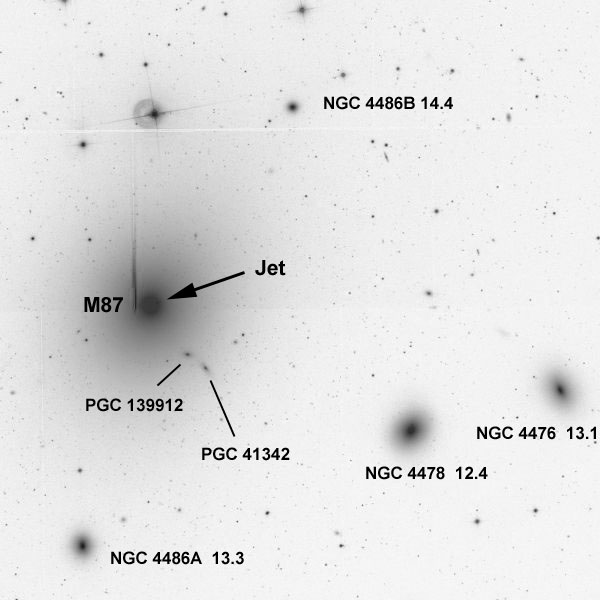
M87 is the central galaxy of the Virgo galaxy cluster. Its magnitude is 8.6 and it belongs to the class of the elliptic cD giant galaxies, which over time cannibalize their entire neighborhood. M87 is at the position of the strong radio source Virgo A. In the centre of M87 a super massive black hole is suspected with more than 6 billion times the mass of our sun, which is surrounded by a disk of accreted material. A jet originates from this nucleus, which emits broadband polarized synchrotron radiation. The jet is collimated by strong magnetic fields of the accretion disk or the black hole itself. The image to the left (Hubble Space Telescope) shows the jet consisting of single knots.

